As a responsible organisation, we understand the significance of nurturing a safe and pristine environment and safeguarding the invaluable ecosystems that support us. Following a proactive approach, we have embraced innovation, incorporated cutting-edge technologies, and implemented operational changes to mitigate long-term environmental risks and promote sustainability.
Through the establishment of a robust Environmental Management System (EMS), we demonstrate our commitment to being a leader in sustainability practices. Our continuous efforts focus on reducing emissions, efficiently managing water resources, and minimising waste generation. Dedicated to advancing on the path of decarbonisation, guided by well-defined targets, we strive to be a recognised advocate for sustainable practices in our industry.
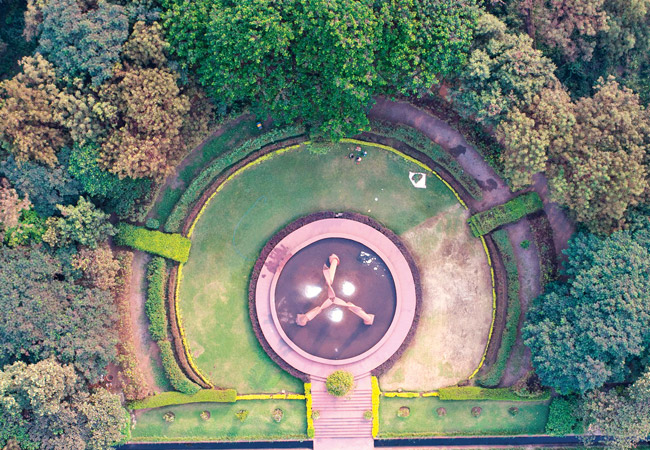
Certifications


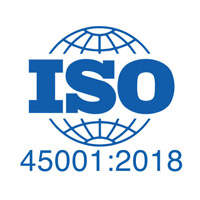
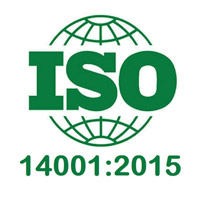
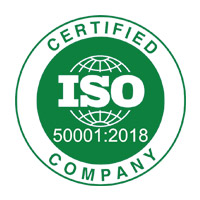

*Vijayanagar Works
Performance

As one of India's major steel producers, we are committed to addressing climate change concerns and have taken decisive steps to ensure a low-carbon future. To achieve this goal, we have formulated a comprehensive roadmap outlining our strategies and plans. Climate action is a top priority for our organisation, and we have implemented a robust climate governance structure to facilitate effective and efficient climate action.

We are committed to reducing specific CO2 emission intensity to less than 1.95 tCO2/tcs and achieving carbon neutrality at JSW Steel Coated Products.
Climate change is an unprecedented and worldwide issue that poses a significant threat to humanity. However, we are grappling with this issue during a time of remarkable economic development in India. According to the National Steel Policy, our rapidly growing economy will reach a capacity of 300 MTPA by 2030. While this may pose challenges to address climate change, the Government of India has taken significant steps such as reformulating the NDCs to reduce CO2 by 45% (compared to 2005 levels) and help India reach Net Zero by 2070.
Preventing the causes of climate change
Mitigating and adapting to its impacts
Fostering resilience to its effects

Climate Action Group (CAG)
In May 2020, we established the Climate Action Group to serve as a central think tank for promoting coordinated climate action throughout our organisation. The group comprises experts from diverse corporate functions, and is tasked with overseeing and directing our climate change initiatives, assessing climate-related risks and opportunities, and developing effective risk mitigation strategies.
The CAG convenes on a monthly basis and provides reports to both the Executive Committee and the Board. The group's responsibilities include monitoring and evaluating our climate change performance to ensure we are making progress in achieving our sustainability goals.
CDP Leadership
This year, we achieved a CDP Leadership Level (A) rating in climate programme for the first time. This is reflective of our commitment to implementing the current best practices to mitigate climate change, and our unwavering effort to decrease our environmental impact. This recognition highlights our dedication to sustainability and our progress towards achieving our environmental goals.
Collaborations
We recognise that addressing climate change requires collective and collaborative efforts. To this end, we are partnering with academia and industry to design and implement scalable solutions to accelerate climate action. We support leading initiatives and are active members of various alliances and working groups, including IRENA, IH2A, the World Steel Association, EV100+, SBTi, UNGC, Responsible Steel, WBCSD, TCFD, Climate Action Charter, GRI, and IBBI1.
We are also the founding members of EV100+, a new zero-emission road transport leadership commitment initiative that aims to phase out the heaviest and most polluting vehicles plying on the roads today.
We have established a partnership with Shell India Markets Private Limited to jointly evaluate short and long-term options for improving energy efficiency, optimising demand for carbon-intensive products and services, adopting decarbonisation technologies, and leveraging digital solutions. Furthermore, we are collaborating with organisations such as the SMS Group and Smartex to explore and evaluate cutting-edge technologies and their potential applications in accelerating climate action.
Scope 3 emissions
We track our Scope 3 emissions to gain a comprehensive understanding of the total GHG impact of our supply chain. This enables us to better manage our environmental impact and work towards reducing our overall carbon footprint.
During the reporting period, we had a credit due to avoided emissions of about 4.71 million tCO2 in the categories of Use of sold products and Processing of sold products, as per the guidance of worldsteel.
These categories contributed around 5.99 million tCO2 emissions. The Scope 3 emissions of all applicable categories were calculated in accordance with 'Technical Guidance for Calculating Scope 3 as Issued by GHG Protocol'.
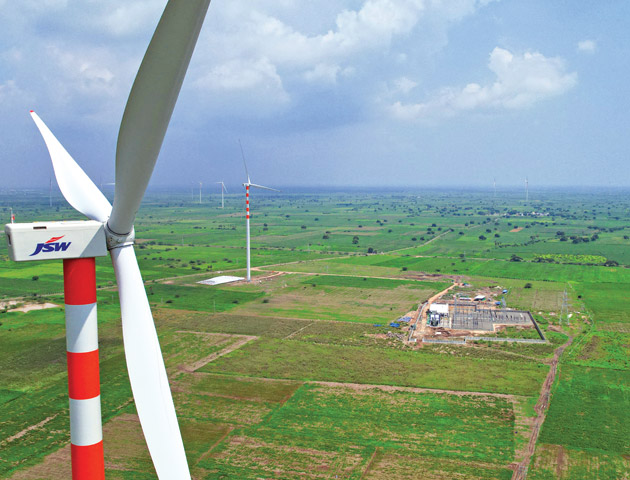
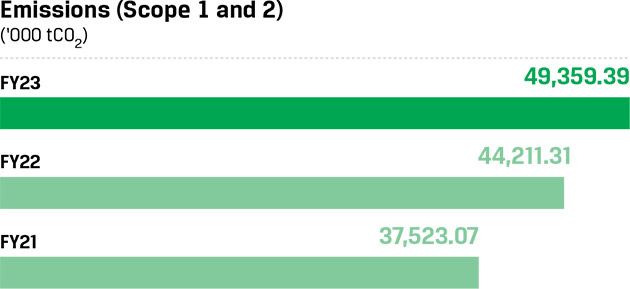
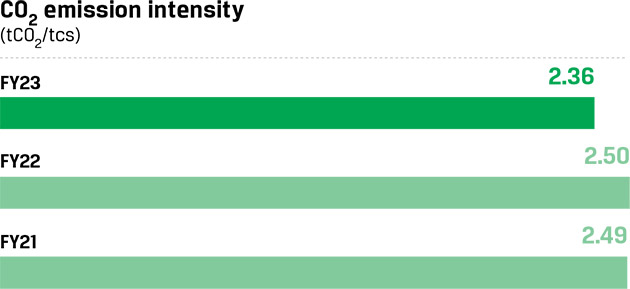
Interventions and outcomes for FY 2022-23
INTERVENTIONS
OUTCOMES
At JSW Steel, we have taken a bold step in line with our decarbonisation commitments for 2030, with the launch of Project SEED (Sustainable Energy Environment and Decarbonisation), a large-scale decarbonisation programme in Vijayanagar in collaboration with BCG. The plant-wide programme, with the involvement of over 200 members across different shops, has been underway for the past 10 months to achieve best-in-class BF-BOF emissions.
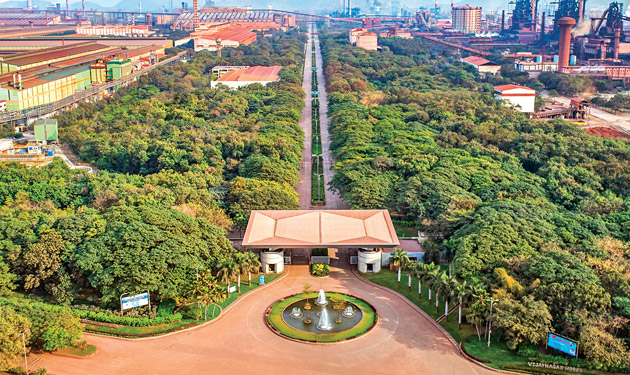
With equal impetus on adapting advanced technologies and driving continuous improvement, the programme has been pivotal in driving engagement across topics like Carbon Capture Utilisation and Storage (CCUS), COG injection in BF and Super Sinter, among others.
Leveraging plant-wide workshops, the programme so far has generated 100+ improvement initiatives with a combined annualised CO2 abatement potential of 9+ MnT by 2030. These initiatives cover a wide spectrum of themes like enhancing renewable energy capacity optimising energy consumption, exploring alternate fuels/ raw materials and waste heat recovery.
On-ground change management was a critical part of driving the decarbonisation journey at Vijayanagar. This included trainings for the core team of sustainability champions through the flagship 'Climate & Sustainability Masterclass' training programme focused exclusively on Sustainability and Decarbonisation customised for the steel industry. Driving the push for the decarbonisation agenda, CO2 emissions performance was tracked at a granular level with emissions embedded into daily management KPI reports.
Potential abatement by 2030
C&S Masterclass
Customised training programme on Sustainability and Decarbonisation
To bring all the efforts together, a customised digital dashboard compatible with multiple reporting standards was developed to facilitate measurement of granular shop-wise CO2 footprint, visibility of implementation of abatement initiatives, and overall plant emissions performance vs target across a time horizon.
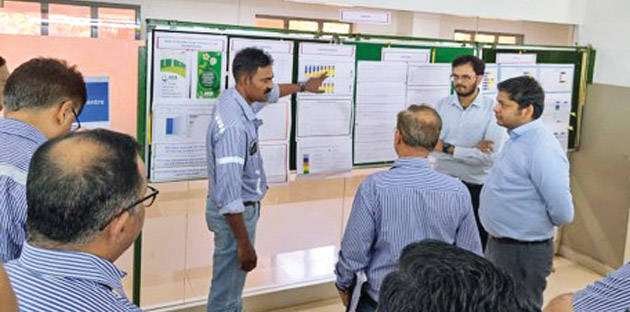
Digital Data Management
A comprehensive digital dashboard to calibrate granular CO2 footprint
Within its first year of launch, the programme received several accolades, including a nomination for the prestigious ‘Steelie award for Excellence in Low Carbon Production’ in 2022
Given the success in Vijayanagar, the programme will be extended to other integrated steel plants, and in time will be driven across the larger group.
Climate change is a global phenomenon with far-reaching consequences for various sectors, including steel. Rising temperatures, extreme weather events, and shifting climate patterns pose significant challenges to steel production and its environmental impact. Being part of the steel industry, we are cognizant about this. As the need to combat climate change becomes more urgent, the steel industry is facing increasing pressure to reduce its carbon footprint, adopt cleaner technologies, and embrace sustainable practices. Balancing the demand for steel with the imperative to mitigate climate change poses a critical challenge as well as an opportunity for the future sustainability of the industry.
We recognise this global challenge and have set our targets to reduce our emissions and contribute in mitigating climate change. In March 2021, we made a commitment to endorse and uphold the recommendations of the Task Force on Climate-related Financial Disclosures (TCFD). By aligning with these recommendations in its four pillars, we aim to enhance our understanding of the potential impact of climate change and make well-informed decisions regarding current and future decarbonisation strategies.
Governance
At the Board level, the Business Responsibility/Sustainability Reporting Committee and the Risk Management Committee review climate-related matters during biannual Board meetings. These committees collaborate through open communication channels and report to the Board of Directors. The CSR committee is also involved in supporting low-carbon strategies. At the management level, the Executive Committee, Climate Action Group, and corporate function teams oversee climate-related matters. We have a dedicated climate change policy with focus on preventing causes, mitigating impacts, and building resilience to climate change.
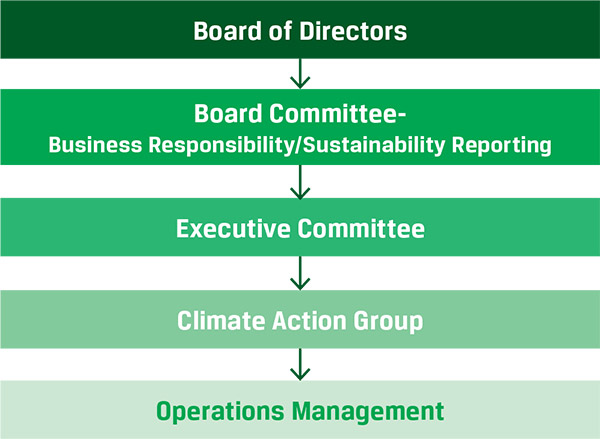

Strategy
Our sustainability efforts prioritise low-carbon products and sustainable development, along with transparency in operations and investments. Recognising the significance of climate risks in our business strategy and decision-making, we conducted a climate change risk assessment. By utilising scenario analysis, we gained insights into potential climate-related risks and opportunities. We employed IPCC Representative Concentration Pathways for assessing physical risks and IEA World Energy Outlook scenarios for transition risks. This assessment guides our climate strategy and business planning for the future. It has helped us embed sustainability at the heart of our business strategy.
We used the IPCC Representative Concentration Pathways RCP8.5 and RCP4.5 for assessing location-specific physical risks and IEA World Energy Outlook (WEO) 2020 Stated Policies Scenarios (STEPS) and Sustainable Development Scenario (SDS) for assessing transition risks.
Physical and transition climate change scenarios
Business-as-usual scenario
IPCC scenarios (Physical Risks)
RCP8.5 scenario
Extremely high emissions scenario with global mean temperature expected to rise by 3.70C (2.6-4.90C) by the end of the century. The scenario assumes a high dependence on fossil fuels and no policy-driven mitigation.
WEO-2020 scenarios (Transition Risks)
Stated policies scenario
Incorporates existing and announced climate policies (till mid-2020) including Nationally Determined Contributions from governments across the world. The scenario provides a baseline against which additional actions are required to meet SDS climate goals.
Optimistic scenario
IPCC scenarios (Physical Risks)
RCP4.5 scenario
Intermediate emissions scenario with global mean temperature expected to rise by 1.80C (1.1-2.60C) by the end of the century. The scenario considers increased use of renewable energy and strong policy-driven mitigation.
WEO-2020 scenarios (Transition Risks)
Sustainable Development scenario
Provides an energy sector pathway which is consistent with meeting global Net Zero CO2 emissions from the energy system as a whole by around 2070, universal access to energy and reduced air pollution.
We have conducted a risk assessment based on the following time horizons, i.e.,

Physical risks
We assessed the potential impacts of physical and transition risk factors under different scenarios to evaluate the level of risk. Our evaluation focused on examining the following physical risk hazards and their associated potential impacts.
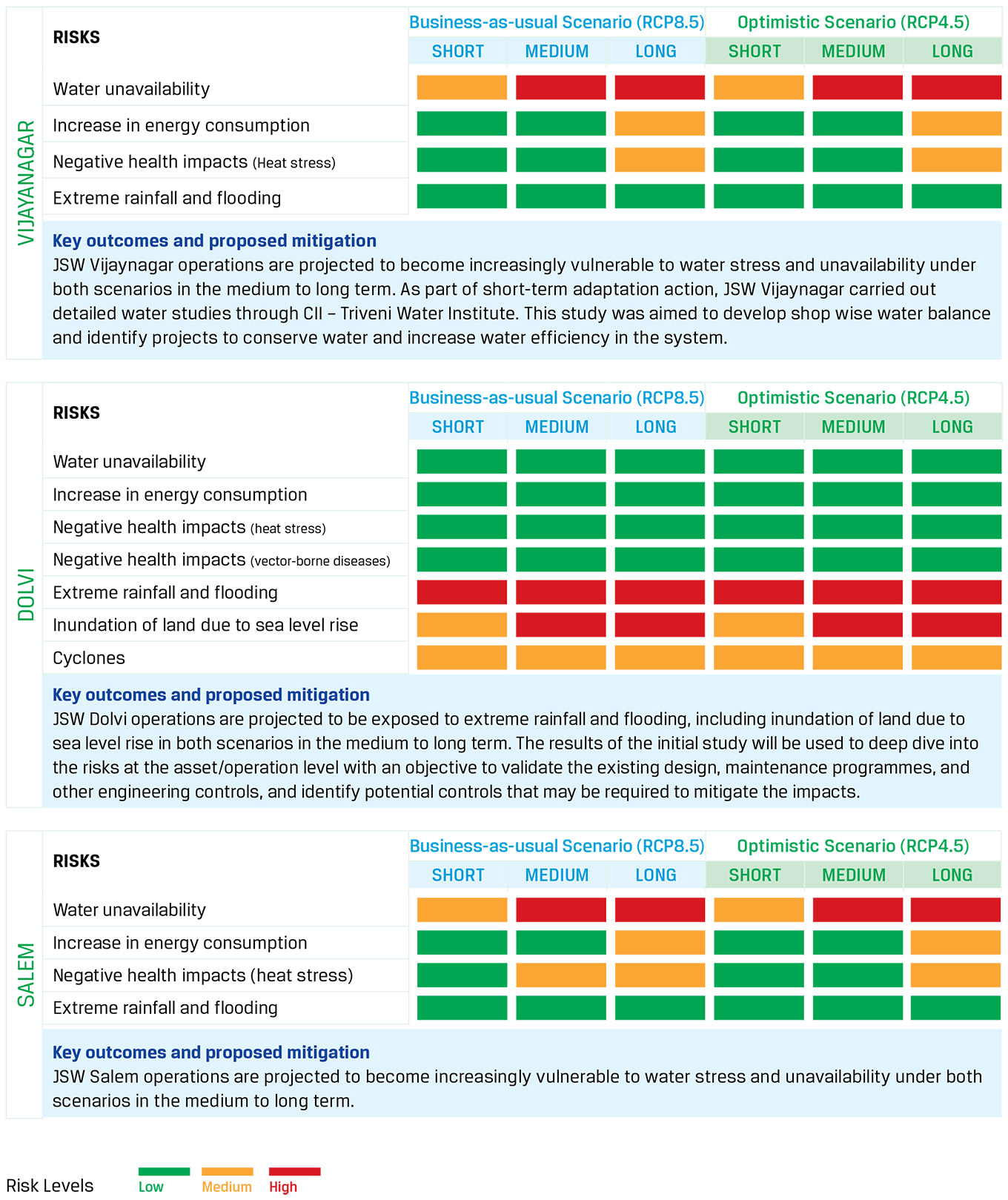
Transition risks
In order to evaluate the transition risks and opportunities related to climate change, we conducted an analysis of how policy and regulatory changes, market dynamics, consumer perceptions, and low-carbon technologies could affect our operations. This analysis was based on two scenarios from WEO-2020: A business-as-usual scenario and an optimistic scenario. We identified organisation-wide transition risks and opportunities and assessed their impacts up to 2050.
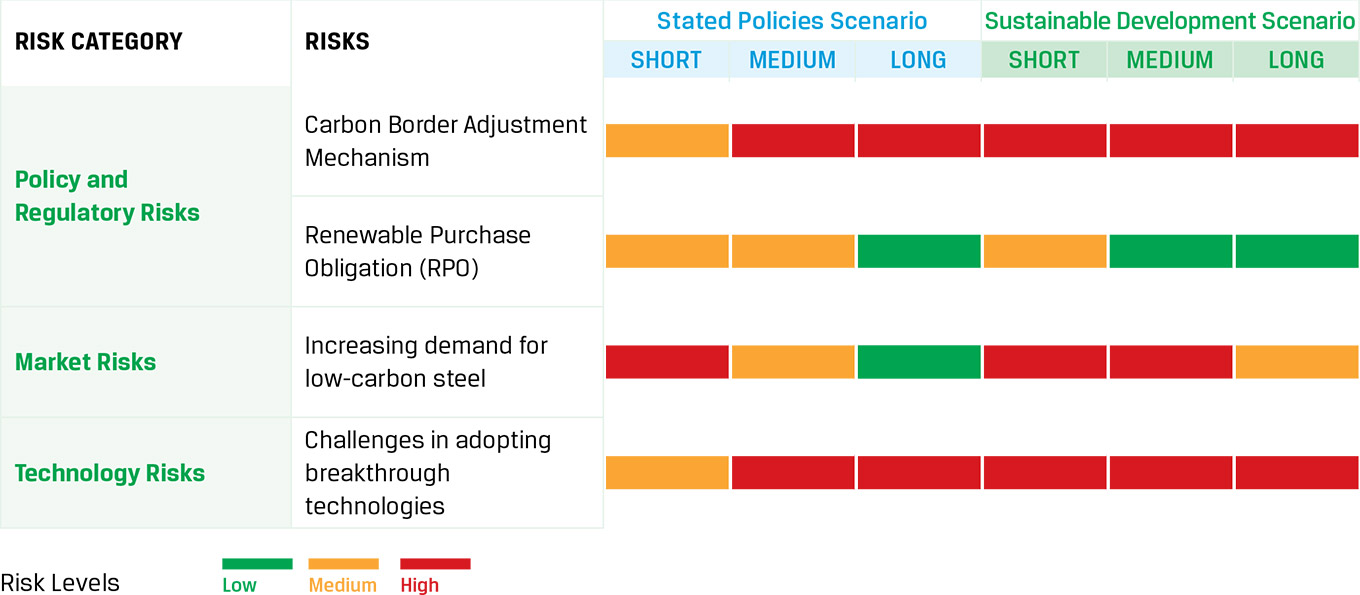
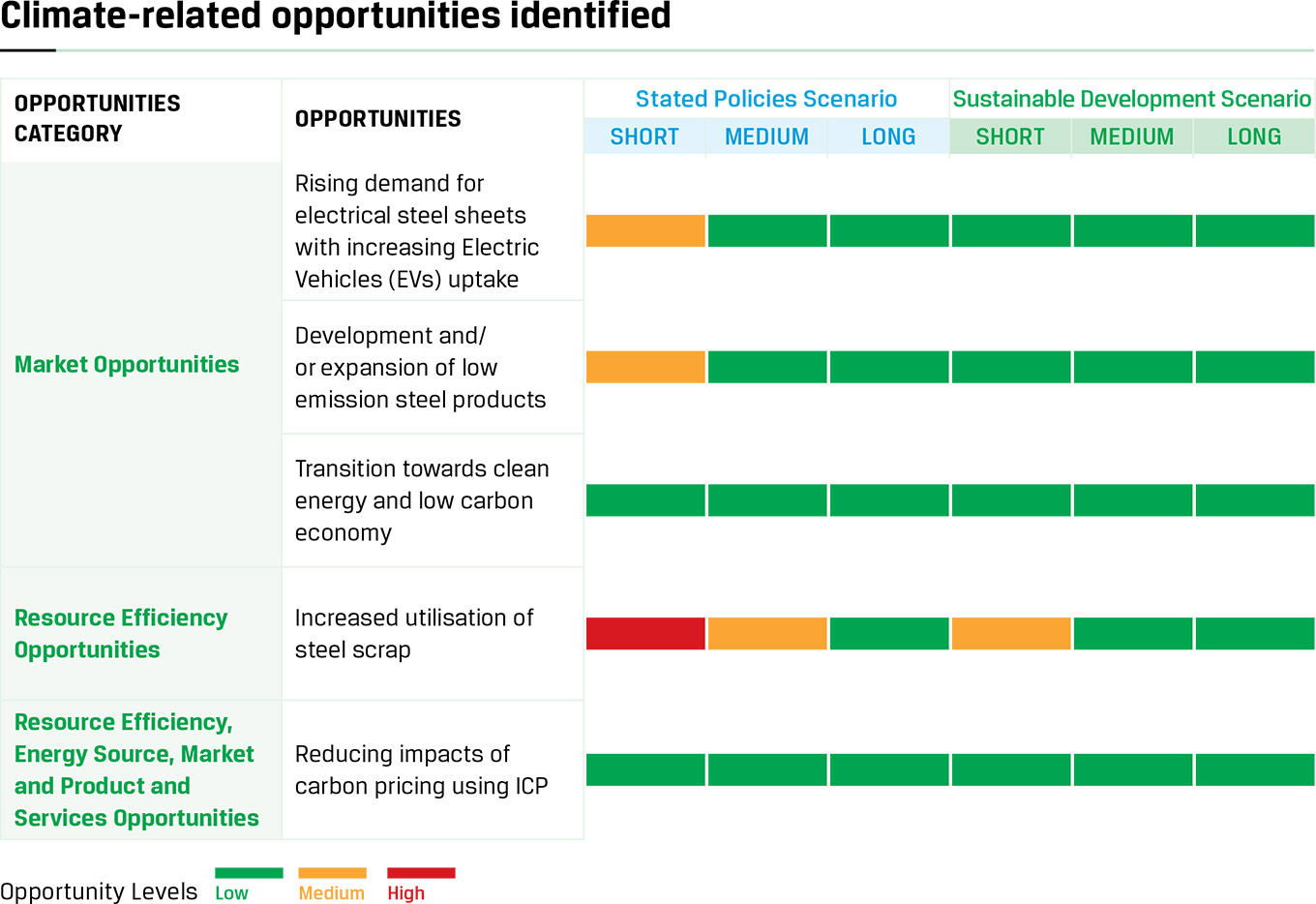
The results of scenario analysis indicate that failure to comply with emerging climate-related policies and regulations particularly, carbon pricing and EU CBAM are most significant risks for JSW Steel. While these policy and regulatory risks are material under both Business-as-usual and Optimistic scenarios, their impact increases significantly under the Optimistic scenario particularly, in the medium and long-term.
Key outcomes and proposed mitigation
We have developed a 2030 low-carbon and sustainable development roadmap to accelerate transition towards green and climate resilient business. Through implementation of this roadmap, we will be working towards addressing a significant part of transition risks that are likely to be witnessed in this decade.
We have adopted a target of reducing CO2 emission intensity to less than 1.95 tCO2/tcs by 2030 for three ISPs, a target that is over and above the current decarbonisation target of 2.2-2.4 tCO2/tcs (in the BF-BOF route) adopted by the Ministry of Steel.
In addition to emission reduction targets, we have also adopted company-wide sustainable development targets to reduce energy consumption, freshwater consumption, and air emissions, as well as increase waste recycling while ensuring no net loss in biodiversity around operations (refer metrics and targets section for more details on these targets). This will further help us in minimising the potential negative impacts of transition risks in the future.
Risk management
Our risk management framework, based on the COSO framework, allows us to identify and assess risks, develop response strategies, and monitor our operations effectively. The framework considers objectives related to operations, reporting, and compliance. Through our Climate Change Risk Assessment Framework, we assess risks and opportunities at both the asset/plant level and corporate level. Mitigation plans and progress towards low-carbon and sustainable development targets are presented to the Executive Committee and board for review and approval. Our 2030 low-carbon and sustainable development plan is a result of our comprehensive risk management process.
Metrics and targets
Regularly monitoring resource consumption, greenhouse gas (GHG) emissions, investments, and other climate-related metrics is essential for evaluating a company's performance in addressing climate change. In line with this objective, we are dedicated to enhancing the transparency of our climate-related data and improving our overall climate performance. We are actively implementing innovative and sustainable practices throughout our operations to reduce our carbon footprint, minimise energy consumption, optimise resource usage, and promote circularity. Through these efforts, we are fulfilling our role as responsible environmental stewards.

We are committed to reducing our carbon footprint by adopting energy-efficient technologies that minimise our overall energy consumption. In addition, we are actively working towards incorporating renewable energy sources into our energy mix. By doing so, we are not only reducing our impact on the environment but also conserving valuable resources.

Reduce specific energy consumption to 5.65 Gcal/tcs
Installation of 10 GW renewable energy capacities to fully use in steel making
The shift towards sustainable energy sources is a global phenomenon that is gaining momentum. It presents a major opportunity for businesses that have traditionally relied on non-renewable energy sources to rethink their energy mix and plan for the future. With the rising cost of energy and the growing demand for a better standard of living, companies must take measures to ensure they can access affordable and sustainable energy to power their operations.
Our focus on sustainable energy is a key pillar of our long-term strategy, and our aim is to phase out thermal coal usage for steel making. We are continuously exploring new ways to integrate clean energy sources into our operations. By optimising our energy usage and embracing renewable energy, we are contributing to a sustainable future for our business and the planet.
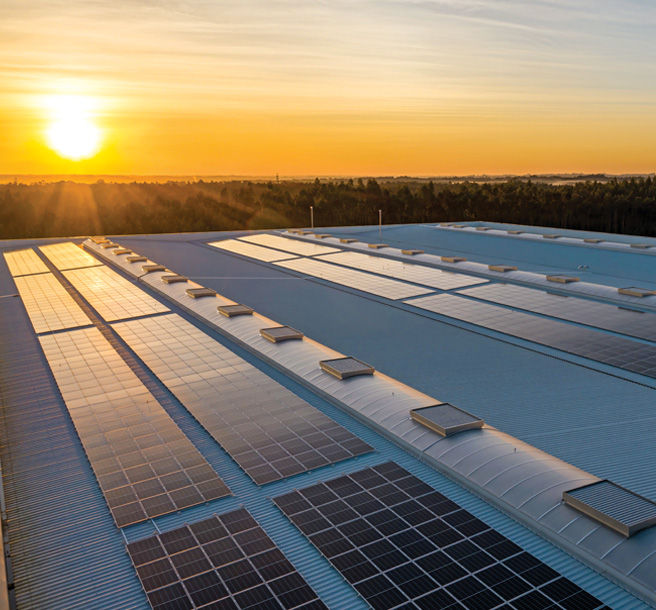
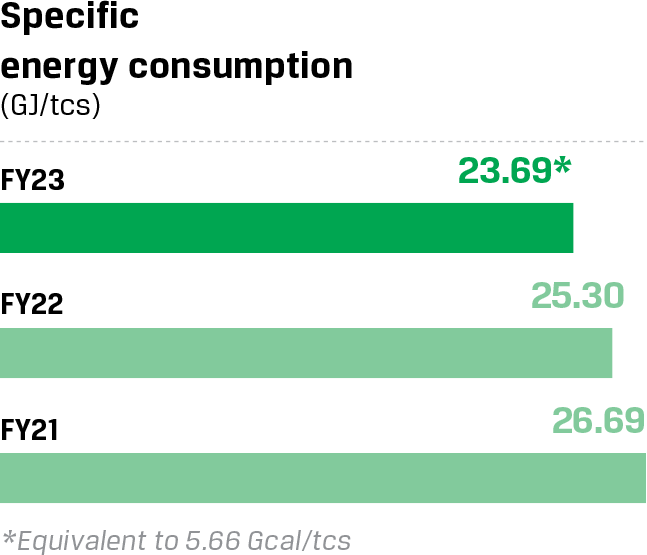
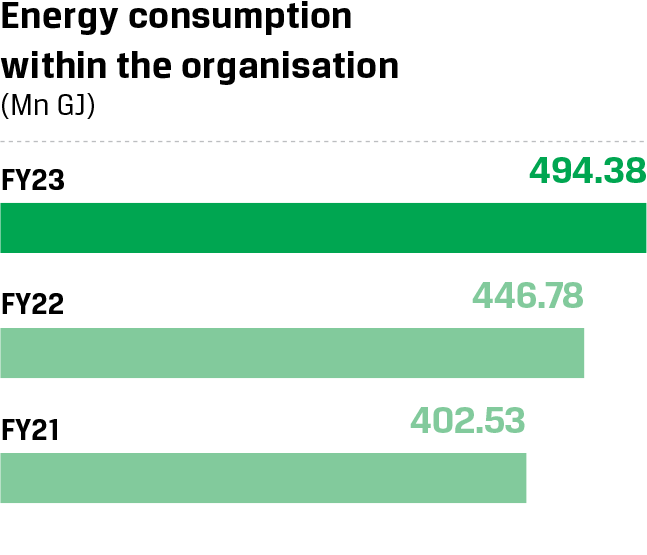
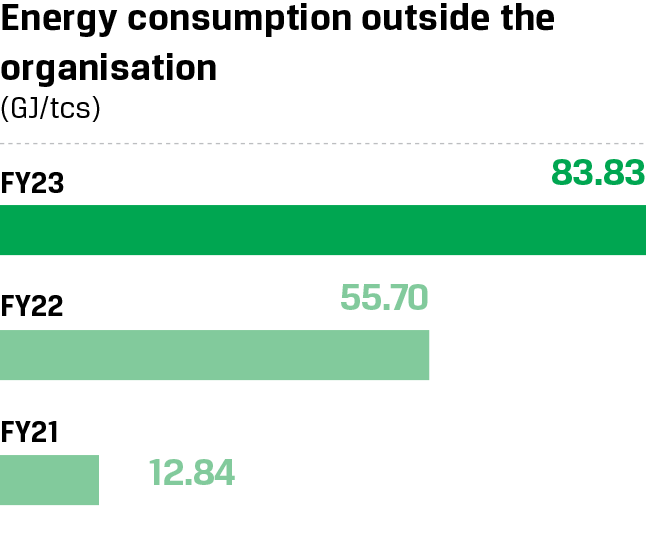
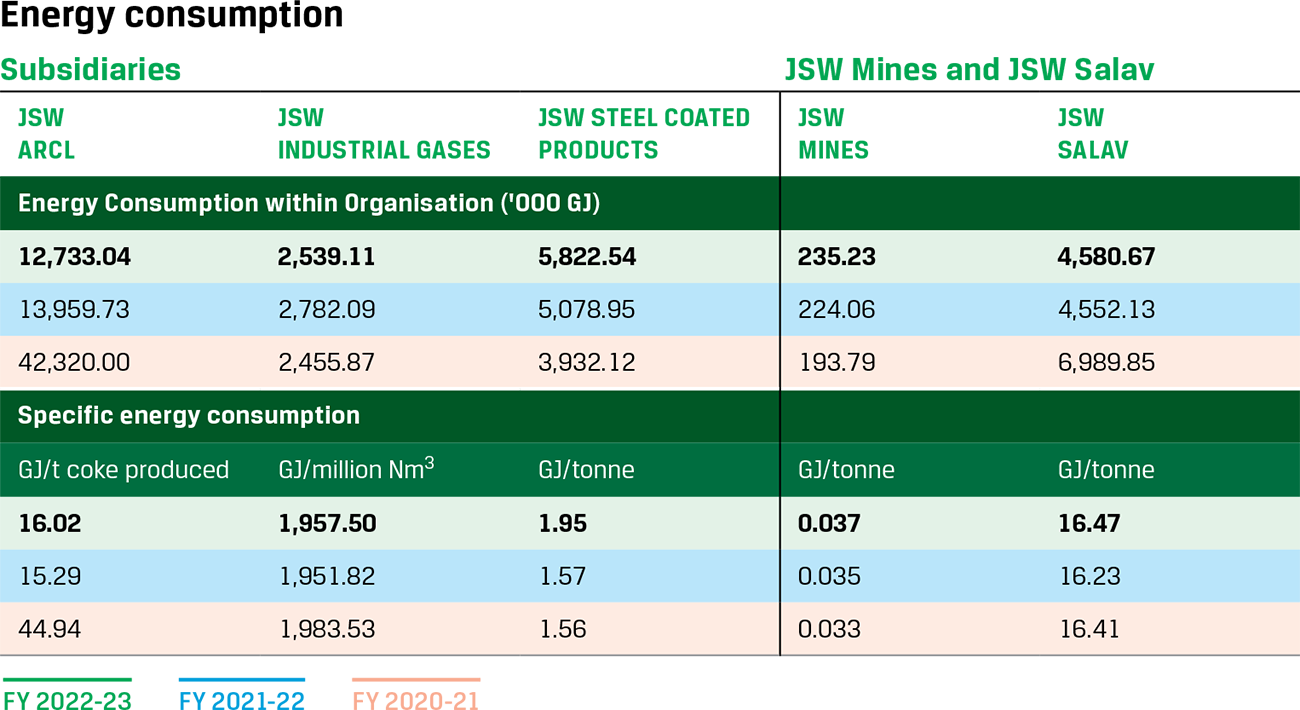
Interventions and outcomes for FY 2022-23
INTERVENTIONS
OUTCOMES

Additional power generated
Annual cost savings
We have always been dedicated to optimising our operations and reducing costs. In pursuit of this vision, we recently undertook a project to enhance the LD gas flow and improve the flame length of our HSM-2 reheating furnace, which relies on LD gas as its fuel source.
Previously, we observed a decrease in flame length in the HSM-2 furnace, raising concerns about the efficiency of the reheating process. Despite high consumption, the LD gas did not meet the furnace's requirements, resulting in inefficiencies and increased costs.
To address this challenge, our team conducted a comprehensive analysis of the chemical composition of the generated gas and examined the mixing of LD gas with COG gas. After careful consideration, we devised a solution: injecting COG into LD gas to augment the methane and hydrogen components of the coke oven gas. This, in turn, improved the flame length and heating value of the LD gas.
The implementation of the COG injection solution yielded remarkable results. The increased gas volume had the potential to generate an additional 17 MWh of power, translating to an annual cost savings of ₹87 crore. Furthermore, the findings indicated that the laminar flame speed was enhanced through increased levels of H2 and CO, while concentrations of CH4, CO2, and N2 had a dampening effect.
The COG injection solution not only resolved the issues with the reheating furnace but also improved its overall efficiency and increased the power potential. This project serves as a testament to our unwavering commitment to sustainability, operational excellence, and cost optimisation at JSW.
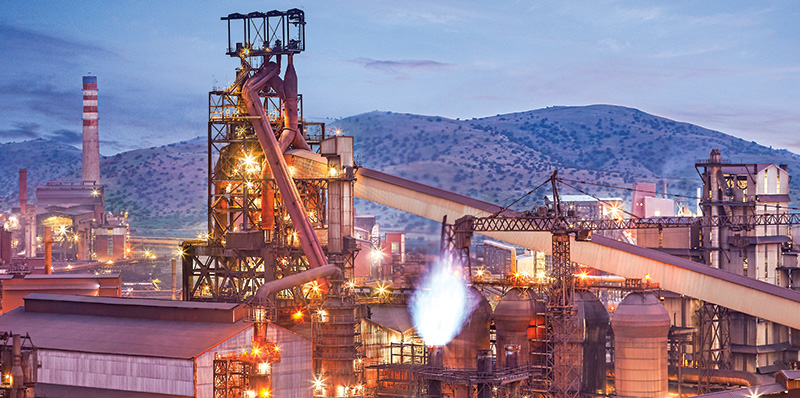
We are continuously reimagining our material handling processes. Towards this, we commenced operations for a Li-ion Battery Operated Coil Transfer Car at our Bawal plant. This addition to our fleet marks a significant shift in how steel coils are transported, setting new industry standards for efficiency, safety, and sustainability.
The Coil Transfer Car has a 50 MT material transfer capacity and two coil placement saddles. Its impeccable design allows it to travel at speeds of up to 30 meters per minute, optimising operations and maximising productivity. The integrated Li-ion battery offers remarkable power backup, enabling uninterrupted operations for approximately six hours on full load. Additionally, the car is equipped with a standby battery provision, ensuring seamless workflow round the clock.
The benefits of this innovation go beyond efficiency and productivity. The car significantly reduces electricity consumption by approximately 50% per day, compared to traditional methods of steel coil transportation. This optimises operational costs and reinforces our commitment to a greener future.
Safety is a top priority with this new addition. By restricting the movement of other lifting vehicles, the car establishes a secure work area that prioritises employees. Furthermore, its design eliminates electrical safety concerns, providing a worry-free work environment.
This initiative has resulted in reduction of diesel consumption and has also successfully reduced material handling rejections and annual carbon emissions. We will be rolling this out across other plants also in the coming years.
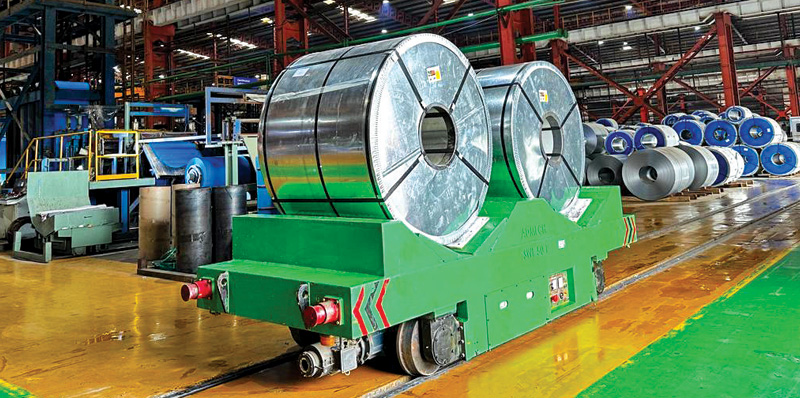
Our approach to resource conservation is grounded in thoughtful sourcing, efficient utilisation, and strategic projects aimed at reducing the demand for raw materials. By prioritising sustainable consumption and production, we believe that we can minimise our environmental footprint and maintain the quality and longevity of our products.
As the world's population continues to grow and urbanisation expands, the demand for natural resources is reaching unprecedented levels. With this increased demand comes intensified competition between industries and nations, highlighting the importance of responsible and sustainable sourcing practices. Long-term resource security and efficient utilisation have become crucial in mitigating environmental risks and ensuring the continuity of industries and society.
We recognise the urgency of these situations and have implemented sustainable practices across our operations. We are committed to optimising resource use, reducing our reliance on non-renewable resources, and finding innovative ways to reuse and recycle materials.
We are dedicated to promoting a circular economy, where resources are used and reused in a closed-loop system, resulting in less waste and more efficient use of resources. We remain committed to responsible manufacturing practices that prioritise sustainability and minimise our impact on the environment.
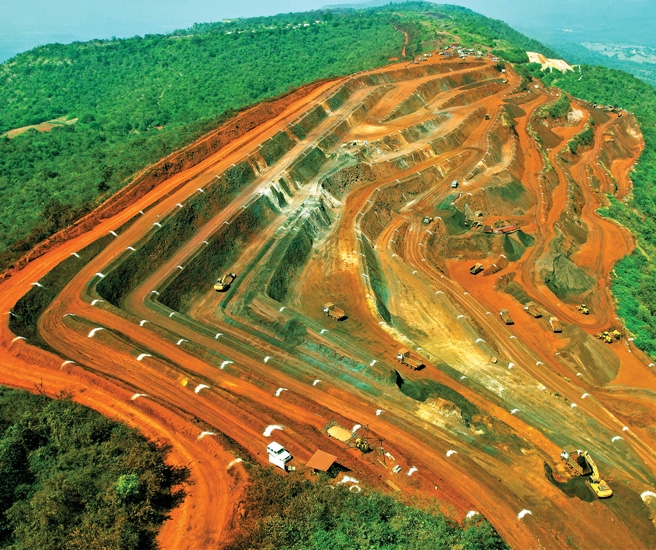
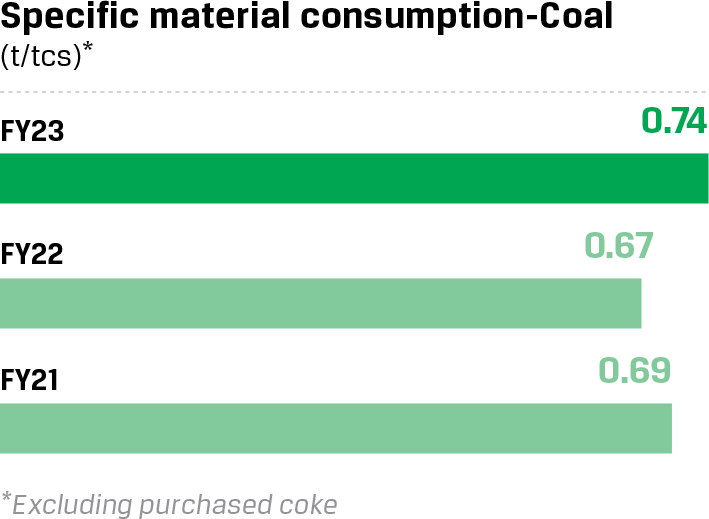
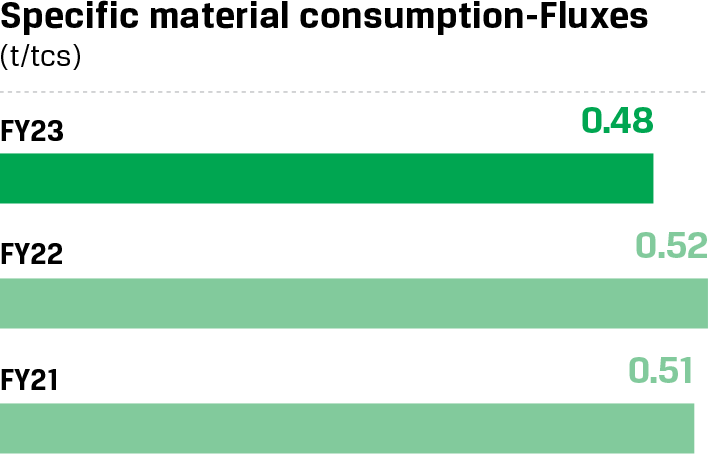
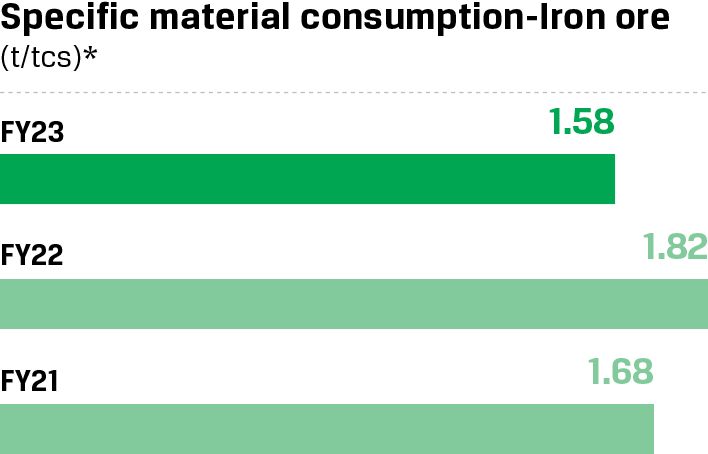
Interventions and outcomes for FY 2022-23
INTERVENTIONS
OUTCOMES
JSW Steel recognises the critical importance of water. As we heavily rely on freshwater for our operations, our water stewardship approach emphasises careful sourcing, innovative and efficient water use. All our plants have a water management plan in place, which is curated with meticulous planning and foresight.

Reduce specific water consumption to 2.21 m3/tcs*
The depletion of water, an essential resource for sustaining life on earth, is occurring at an unprecedented rate. There is a growing demand for freshwater in communities and industries worldwide, and achieving water security has become a global priority. To address these persistent and long-term challenges, innovative approaches to sourcing and managing water are being sought after.
Our plants operate in water-stressed areas, making it crucial for us to continue pushing the boundaries in establishing long-term water security for both our operations and communities.
We have implemented water-efficient technologies as part of our water stewardship approach. This will allow us to conserve, reuse, and recycle water to promote responsible water use. Additionally, we have evaluated and reviewed our water risks and have disclosed them through CDP's Water Security 2022 initiative. Furthermore, several water conservation measures have been implemented at both the plant and community levels, including conducting aquifer mapping and hydrogeological studies, to help manage our water resources efficiently.
We extended our interventions for water stewardship initiatives beyond boundary of the manufacturing plant this year. We have completed study to develop a deeper understanding of likely risks and opportunities for future water scenarios at our Vijayanagar plant by delineating watershed covering hydrological evaluation, land use/land cover analysis, water quality and availability for our plant in Vijayanagar. We used the Digital Elevation Model (DEM) (a function of topography and slope) developed from SRTM 30m resolution satellite data to undertake hydrological evaluation. The study helped to identify strategies to enable improvement in water resources within the watershed. We are extending this scope of work to other plants in the next financial year.
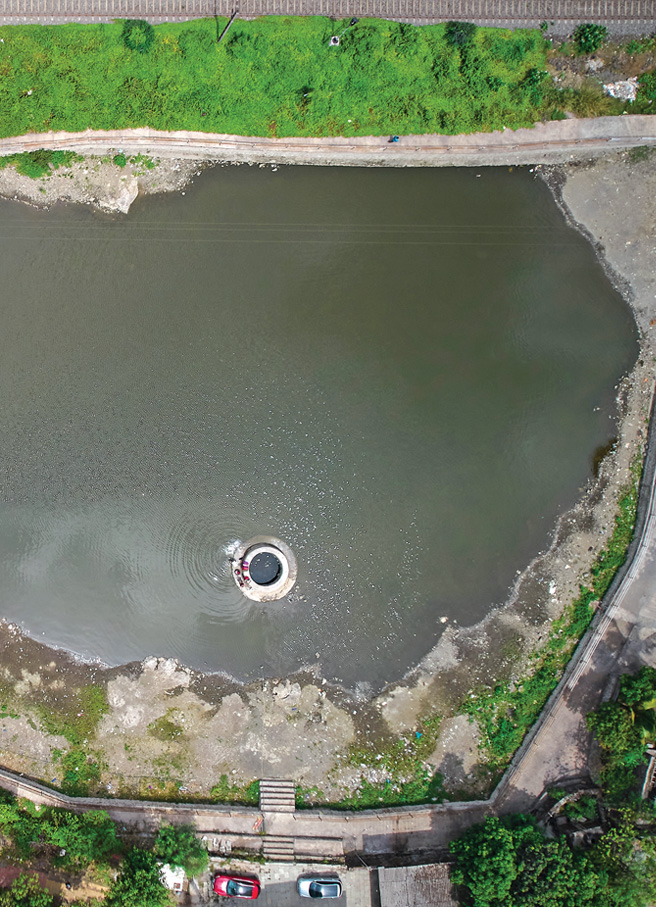
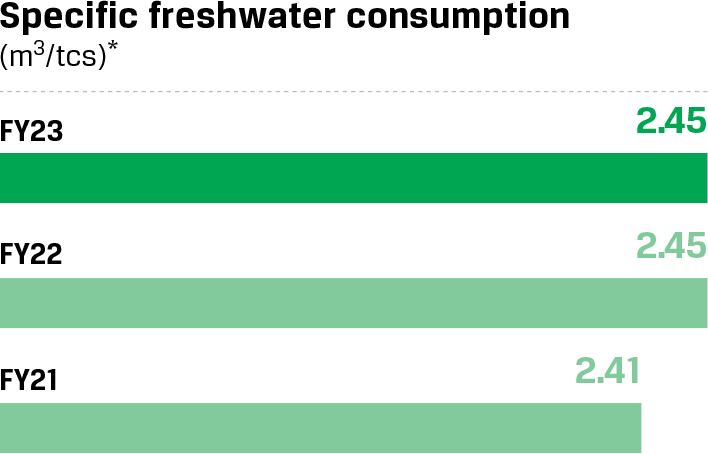
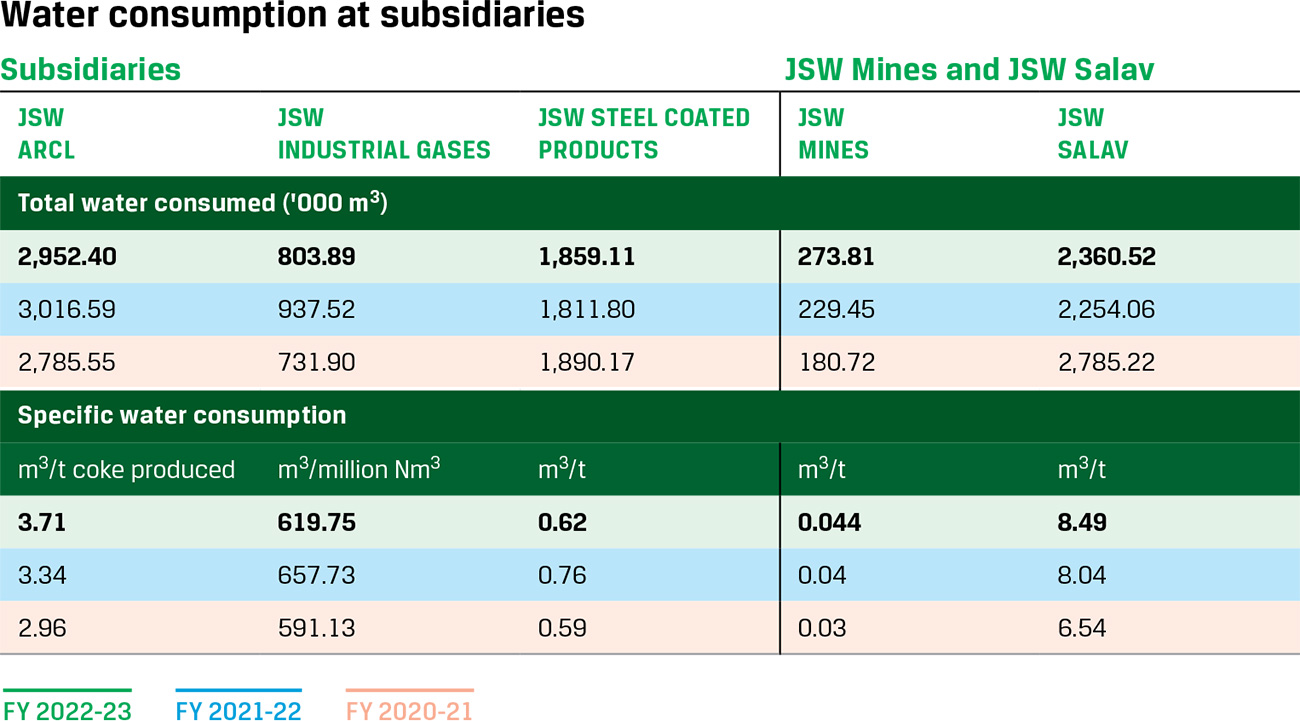
Interventions and outcomes for FY 2022-23
INTERVENTIONS
OUTCOMES
Our approach adheres to a widely accepted 'waste management hierarchy', which follows a prevention-reuse-recycling-disposal value chain. We have also adopted a 'Zero Waste to Landfill' model, which involves monitoring and optimising our resource usage, and finding alternative uses for the waste materials we generate.

Achieve 100% use of all waste generated from our operations
As the world continues to develop and grow, the impact of human activity on the environment has become increasingly concerning. One of the most pressing issues we face is the management of waste. With a rising global population and urbanisation, waste generation has reached unprecedented levels, leading to a host of problems that threaten our health, the environment, and the economy.
The consequences of poor waste management are far-reaching and can affect all aspects of life. From sanitation and hygiene problems to the acceleration of climate change and pollution, the impact of waste on society is undeniable. To address this issue, it is crucial to focus on waste minimisation and the promotion of circular economy models that prioritise reusing, recycling, and responsible manufacturing.
The amount of waste generated globally each year is staggering, and finding solutions to manage and dispose of it effectively is becoming increasingly difficult. Improper waste treatment can lead to a range of problems, including organic decay that contributes to greenhouse gas emissions and the accumulation of non-degradable waste in our ecosystems.
To combat this problem, we have embraced circularity as a viable solution, moving away from traditional linear use-and-dispose practices. We generate significant quantities of waste as a by-product of our steelmaking processes. To manage this, we have implemented an integrated waste management strategy that considers the environmental impact, social effects, and commercial viability of our practices.
Effective waste management is essential to protecting our environment, health, and economic well-being. By prioritising waste minimisation and embracing circular economy models, we can reduce the impact of waste on society and create a more sustainable future for all.
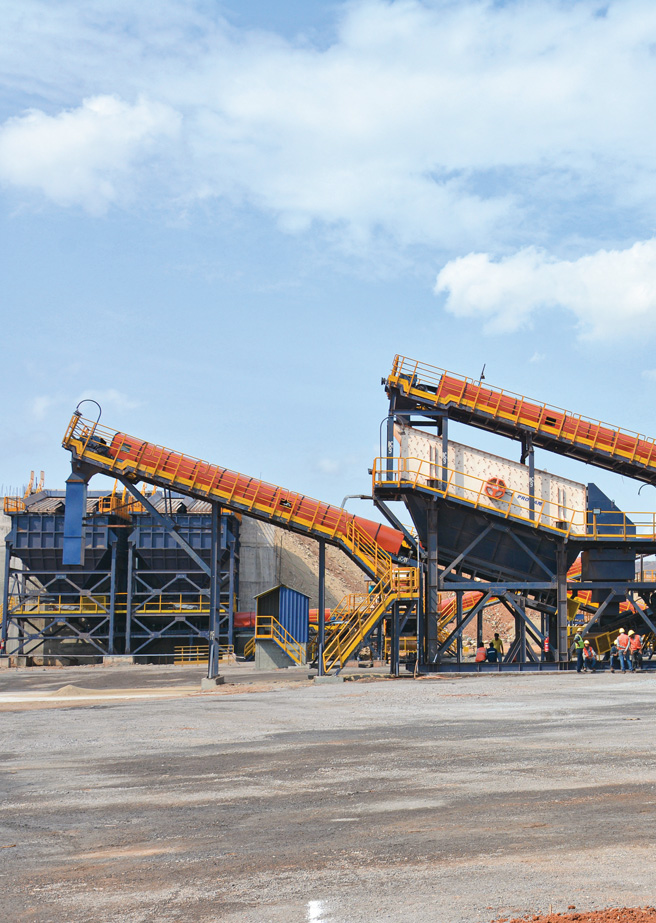
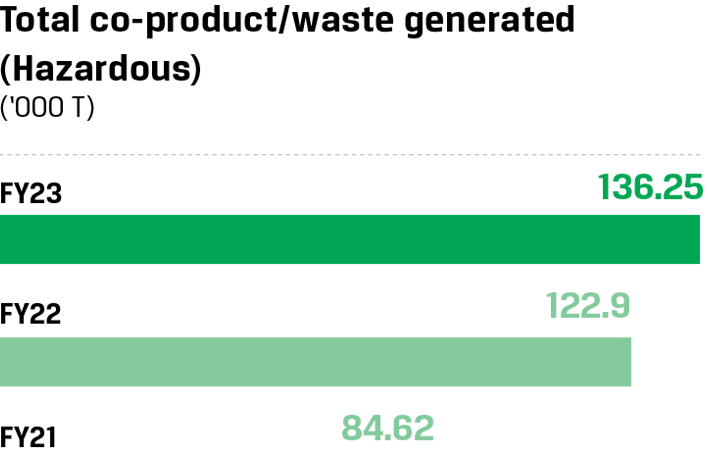
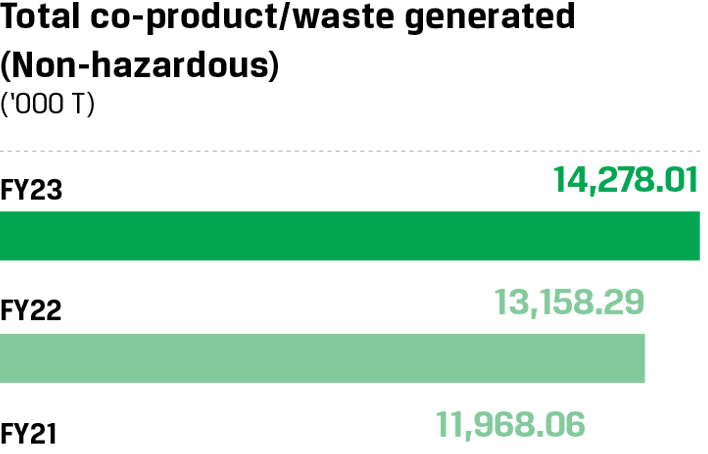
During the year, 2.44 MnT tailings were generated from ore beneficiation.

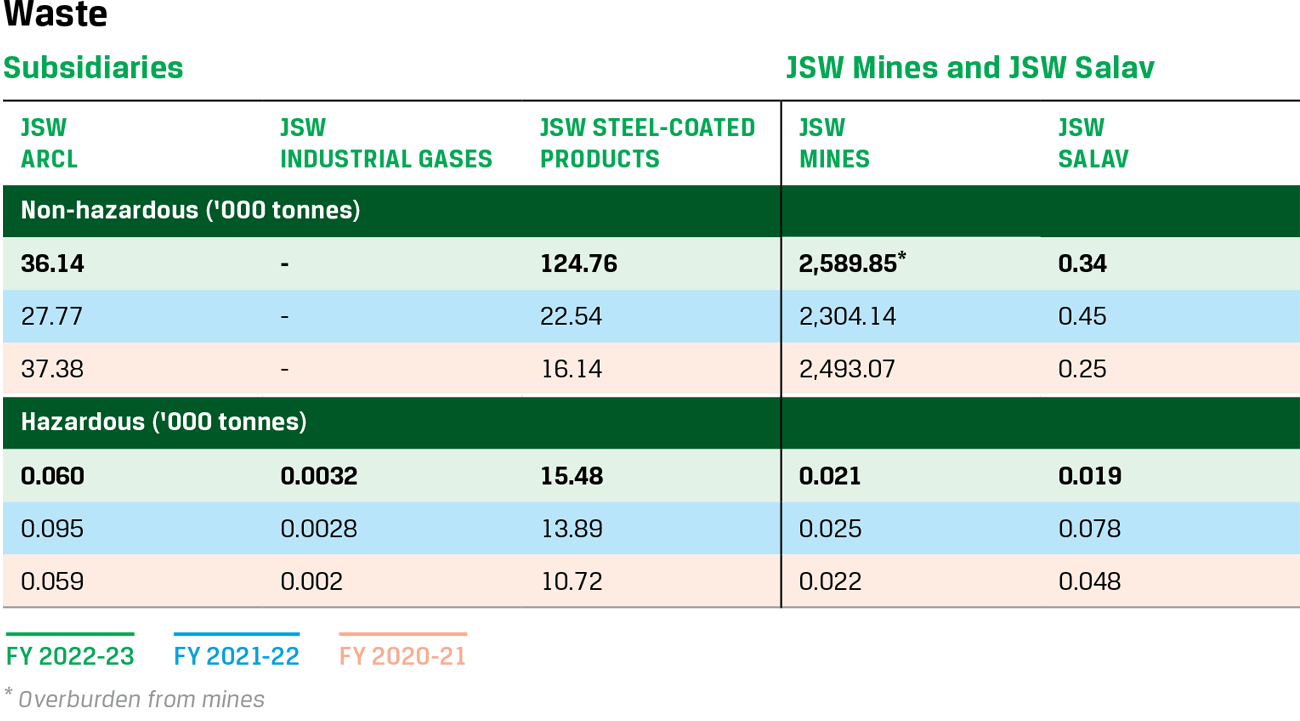
Interventions and outcomes for FY 2022-23
INTERVENTIONS
OUTCOMES
We are undertaking steps towards sustainable road construction with the help of the Central Road & Research Institute (CRRI). The construction of a concrete road using steel slag as aggregates on the National Highway 66 (Mumbai-Goa) covering 1,000 metres has been completed with technical support from CRRI. The project was a result of a comprehensive study by the CRRI on the utilisation of steel slag in road construction, specifically for our Dolvi plant.
During the field trial, the CRRI used Steel Slag in various sizes, ranging from 0-6, 6-10, 10-20, and 20-30 mm, in different layers of the concrete road; including Granular Sub Base (GSB), Wet Mix Macadam (WMM), Dry Lean Concrete (DLC), and Pavement Quality Concrete (PQC). Approximately 16,000 tons of EAF slag was used to construct 1km of the concrete road.
The TCLP test results showed that the steel slag was safe for road application, making it suitable for use as aggregates in different layers of bituminous roads. Additionally, slag fines were utilised in the embankment of the highway. With the success of the project, CRRI has approved the use of slag aggregates in DLC and PQC on concrete roads. We are looking to expand the project to the next level, which shows the potential for using steel slag as a viable alternative to traditional construction materials in road construction.
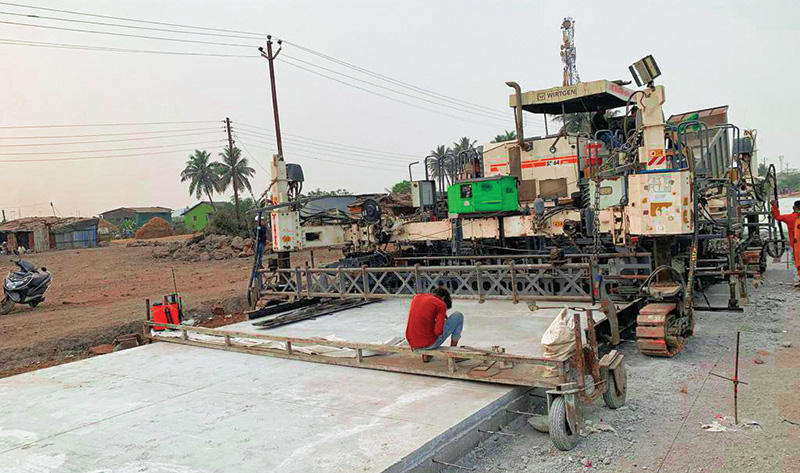
Vijayanagar Steel Plant is a demonstration of our unwavering commitment to environmental stewardship and innovation in the steel manufacturing sector.
Following extensive trials conducted over the past year, we successfully injected a substantial quantity of waste plastic through tuyeres. Building upon this achievement, we are committed to refining and expanding our waste plastic injection capabilities, further bolstering our environmental efforts and enabling circularity and sustainability.
Traditionally, coke, a high-carbon fuel, has been widely used as a reducing agent in steel production. However, by injecting waste plastic into the process, we have demonstrated that this approach can significantly reduce coke consumption while maintaining the quality of the iron produced.
This pioneering approach not only reduces the reliance on fossil fuels but also addresses the pressing issue of plastic waste management. This remarkable achievement reaffirms our position as a frontrunner in sustainable steel manufacturing, and the successful waste plastic injection trial is a testament to our vision of a greener and more sustainable future.
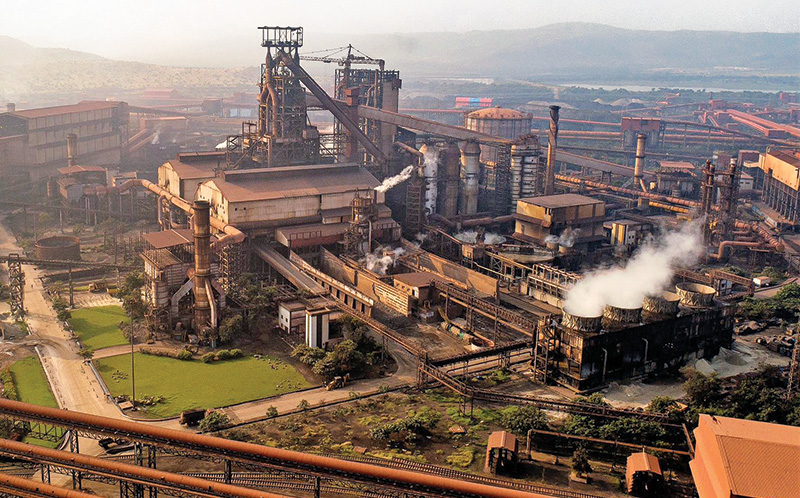
We firmly believe that sustainable waste management practices are essential for safeguarding the planet's future. We remain committed to reducing our environmental footprint and fostering a cleaner, greener, and more sustainable future for all.

Maintain Zero Liquid Discharge (ZLD)
Untreated industrial waste, effluents, and domestic sewage pose a major threat to natural ecosystems and communities. The latest United Nations World Water Development Report reveals that approximately 2 billion people worldwide lack access to clean and safe drinking water. In addition, a significant amount of wastewater is discharged back into the ecosystem without proper treatment or reuse, exacerbating the problem.
To address this, industries must take a responsible approach and manage their effluents properly, limiting the discharge of harmful substances into natural water bodies. JSW Steel is dedicated to upholding its Zero Liquid Discharge (ZLD) status in all of its steel manufacturing facilities. Through the implementation of the ZLD process, we have not only mitigated the risks associated with water acquisition but have also achieved cost savings, while significantly improving our environmental performance.
Moreover, we operate on-site Sewage Treatment Plants (STPs) to manage domestic sewage efficiently. Our STPs ensure that wastewater undergoes proper treatment, and the treated water is repurposed for irrigation purposes. By doing so, we can conserve precious water resources while minimising the impact of our operations on the environment.
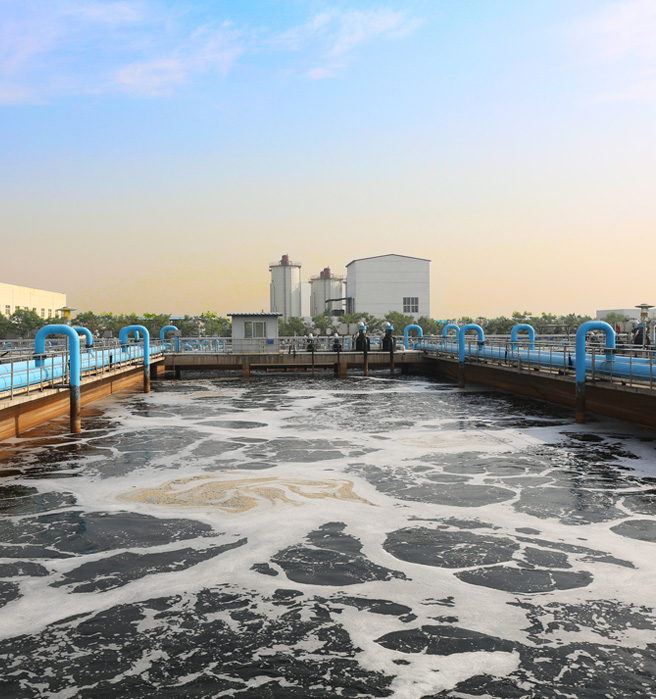

Interventions and outcomes for FY 2022-23
INTERVENTIONS
OUTCOMES
As a responsible organisation, we are dedicated to preventing and mitigating air pollution by enhancing the efficiency of our operations and reducing emissions. We strictly adhere to emission regulations, ensuring our emissions remain within legal limits and continually strive to surpass these standards. Moreover, we acknowledge our responsibility towards the communities we serve and recognise the need to go above and beyond in fulfilling our commitments.

Reduce specific dust emissions to 0.26 kg/tcs
Reduce specific emissions of oxides of sulphur to 0.82 kg/tcs
Reduce specific emissions of oxides of nitrogen to 0.91 kg/tcs
Air pollution is a serious issue that affects the environment and human health. Particulate Matter (PM), and other harmful gases, such as nitrogen oxides (NOx) and sulphur oxides (SOx), are major contributors to air pollution.
We have implemented a range of policies and practices to prevent, control, and mitigate our air emissions. Our focus is on reducing both point-source (like stack emissions) and non-point source (like fugitive emissions) pollution. To ensure compliance with environmental regulations, we have established robust monitoring systems and installed advanced emission reduction technologies.
To further improve our emissions control, we have installed state-of-the-art systems like the MEROS (Maximised Emission Reduction of Sintering) system at our manufacturing facilities. This cutting-edge technology helps us reduce emissions from the sintering process, a significant source of air pollution. In addition, we have invested in advanced scrubbing, dedusting, and filtration systems to reduce emissions further. With these measures in place, we are committed to achieving the highest standards of environmental performance and minimising our impact on the environment.
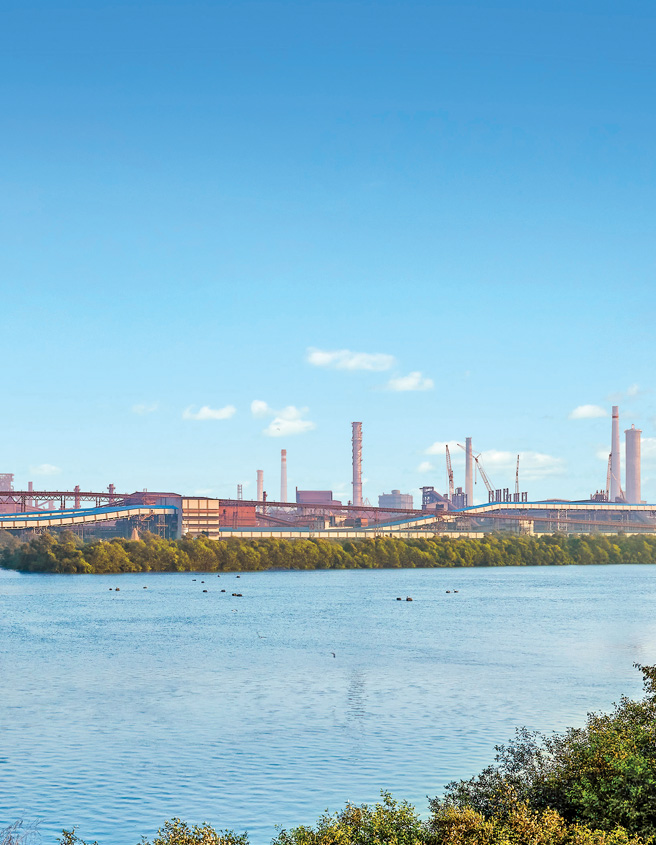




Interventions and outcomes for FY 2022-23
INTERVENTIONS
OUTCOMES
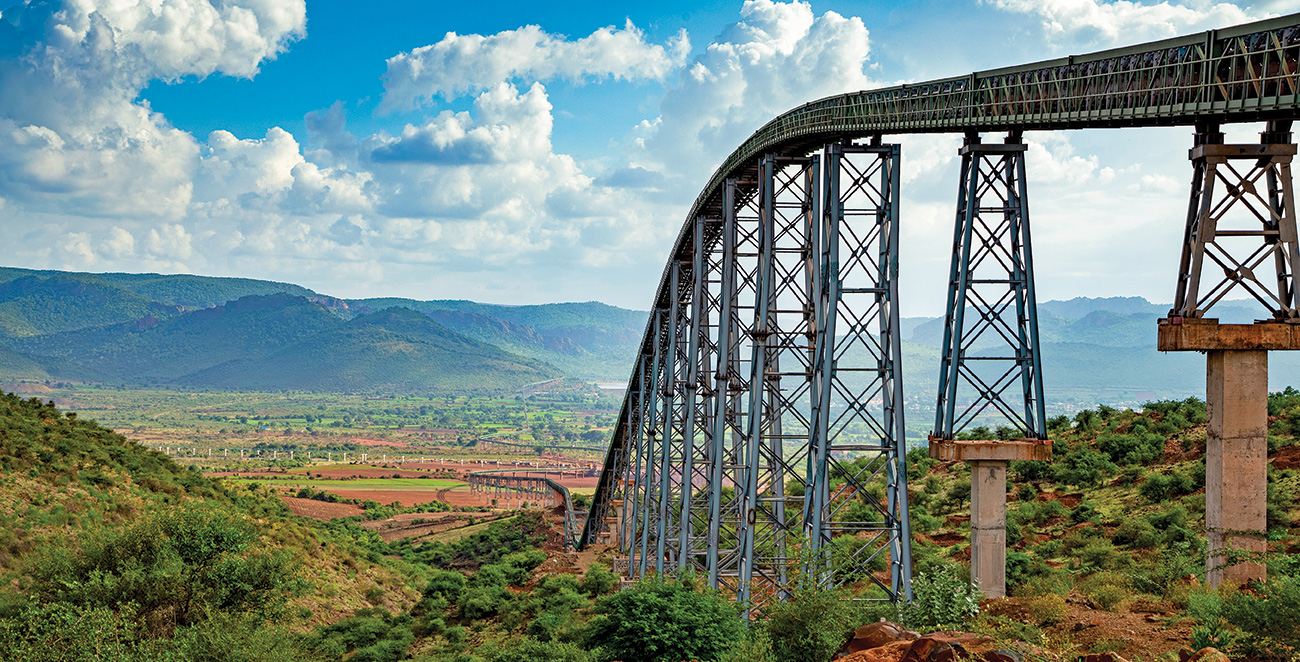
We have implemented the MEROS-WGR system, a specialised bag filter-based dry gas cleaning solution designed for sinter plants at Dolvi. This system, the first of its kind in India, treats an impressive capacity of up to 4,30,000 Nm3/hour while achieving a remarkable reduction in dust emissions to less than 10 mg/Nm3.
The MEROS-WGR system incorporates forward-thinking provisions for future emission control technologies, including DeSOx, DeNOx, DeOrganic, and heavy metals removal systems. Additionally, the installation of the sinter plant WGR system enables the recirculation of up to 40% of the off-gas, optimising resource utilisation and further reducing emissions.
This innovative approach has had a significant positive impact on the environment, safeguarding ecosystems, improving air quality, and addressing public health concerns. The system's adaptability and scalability ensure our organisation remains committed to ongoing environmental improvements.
Through the MEROS-WGR system, we have exemplified our dedication to emission reduction and set a new standard for sustainable sinter plant operations in India.
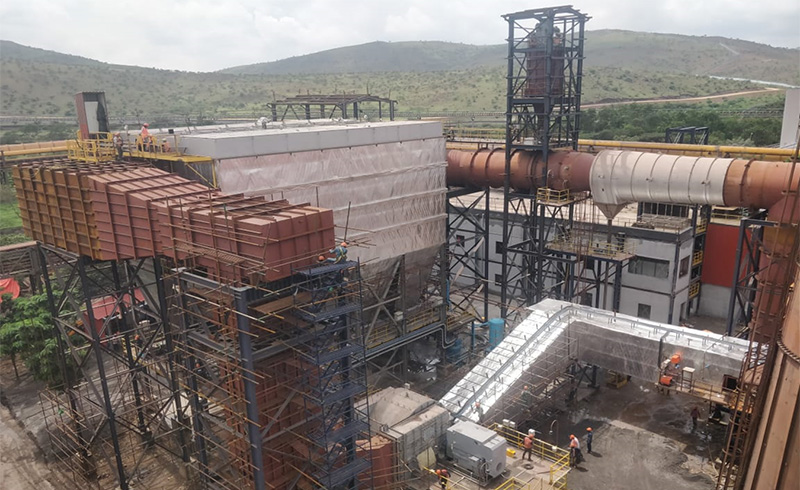
The world is facing increasing challenges to biodiversity due to factors such as deforestation, habitat loss, overexploitation, invasive species, pollution, and climate change. Maintaining biodiversity is crucial for achieving a balanced ecosystem, and is also indicated as one of the core focus areas by WBCSD. We place significant emphasis on biodiversity as a core focus area.

Achieve no net loss of biodiversity at our operating sites
Consequently, we have aligned ourselves with the National Biodiversity Targets and adopted a risk-based approach to make biodiversity a critical decision-making factor. We are also proud to be a Working Group and founding member of the India Business and Biodiversity Initiative (IBBI) Chapter of CII-CESD, where we actively promote biodiversity conservation within the business community.
To preserve biodiversity, we have taken proactive measures to analyse our operations' impact on biodiversity in our impact zones, and taken scalable measures to protect it in various forms. We also collaborate with local communities to restore natural habitats and combat biodiversity loss. For example, we implemented scientific management practices to conserve the mangrove ecosystem near our Dolvi facility, preventing saltwater inundation of farmlands and restoring the natural cover
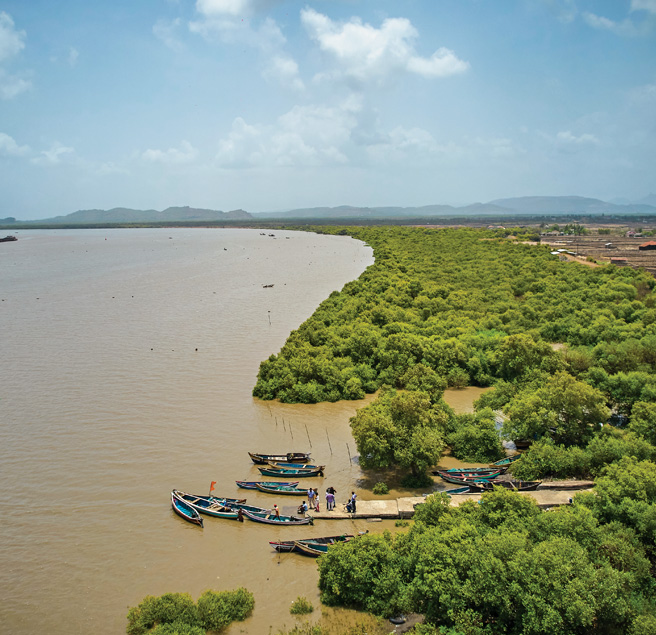
Mangrove saplings planted
In FY 2022-23
Cumulative saplings planted over the years
Area covered by mangrove plantation
In FY 2022-23
Cumulative area restored over the years
Interventions and outcomes for FY 2022-23
INTERVENTIONS
OUTCOMES
Mahavanam, meaning “Mini Urban Forest”, is an effort to grow these forests in the Mecheri Union to reduce the average temperature by 2°C. Four batches of Mahavanam have been initiated in public locations, covering an area of 29,000 sqft, with a total of 5,925 saplings planted. The purpose of these mini forests is to increase green cover, and offer a plethora of benefits such as lowering the temperature, reducing air and noise pollution, and absorbing up to 30 times more carbon dioxide than normal forests.
The planting process of Mahavanam forests is thorough, with soil samples from the lands marked for growing the forests being analysed in the initial phase for Organic Carbon, NKP (Nitrogen, Phosphorous, Potassium), and the pH value of the soil. Existing soil is excavated to a depth of 3 ft, and soil enrichment nutrients such as rice husk, wheat husk, coir pith, cow manure, and natural waste are added to the soil.
The Miyawaki afforestation method is employed, pioneered by Japanese botanist Akira Miyawaki. The technique involves planting various native species of plants close to each other so that the greens receive sunlight only from the top and grow upwards rather than sideways. These biodiverse plantations enable ecosystems of birds and butterflies to flourish, and require no maintenance after two years.
Mahavanam forests offer several benefits, such as the supply of oxygen, enhancing rainwater management, and water quality. Vegetation reduces runoff and improves water quality by absorbing and filtering rainwater. Trees cool the city by up to 13% and release water vapour into the air through leaves.
The net cooling effect of a young, healthy tree is equivalent to that of 10 room-sized air conditioners. One acre of new forest can absorb about 2.5 tonnes of carbon dioxide annually, and an acre of forest can absorb twice the CO2 produced by the average car annually. JSW Foundation is planning to develop ten mini forests in selected parts of Tamil Nadu to increase green cover and create awareness on the importance of planting trees. In addition, JSW is planting an additional 5,000 saplings every year in surrounding villages to increase green cover and rainfal.
The impact of the Mahavanam initiative is significant, contributing remarkably to controlling human pollution, reducing heat, increasing fresh air in surrounding areas, providing shelter for birds and insects, and mitigating the effects of global climate change.
Furthermore, the local school management and students have taken ownership of maintaining the Mahavanam forests. Increasing green cover is one of our major goals across our DIZ locations, and the creation of these mini forests in relatively small spaces and within a short span of time using compression techniques is a positive step towards achieving this goal.
The biodiversity initiative to develop a Green Belt at Sasan Vana Biodiversity Park in 240 acres of our land near Basapur is a long-term project spanning over five years. The first stage of the development, which covers 55 acres of land, has already been initiated.
This initiative aims to create a thriving ecosystem that supports a diverse range of flora and fauna, promoting environmental sustainability and preserving the region's biodiversity. The project's focus on sustainable development will also benefit the local community by creating green spaces for recreation and educational opportunities. Overall, this biodiversity initiative is a commendable effort towards preserving the natural resources and promoting environmental stewardship.
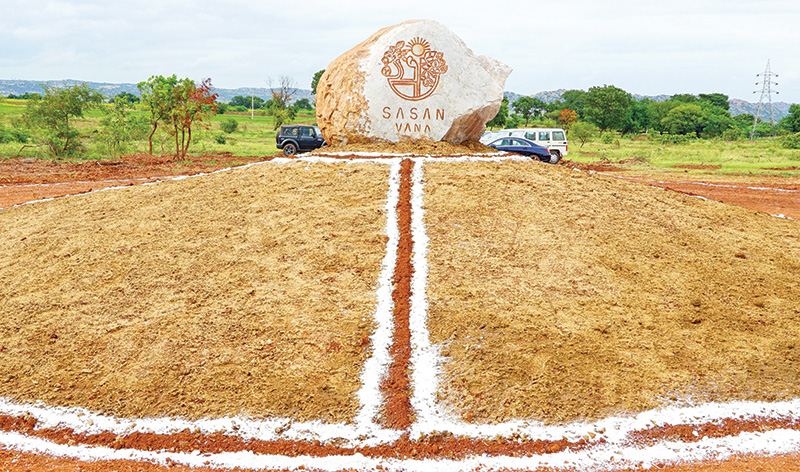
We recognise that responsible mining practices are essential to achieving sustainable development. Through our commitment to scientific management practices, we aim to minimise the environmental impact of our mining activities and ensure a better future for generations to come.
If not managed scientifically, mining can pose significant environmental risks due to its dependence on natural capital. To support our raw material requirements, we currently operate 13 iron ore mines across Karnataka and Odisha, where we prioritise sustainable mining practices with minimal environmental and social impact. We take a proactive approach to minimise our environmental footprint and are committed to responsible mining practices.
We have implemented several measures to ensure good air quality at our mines. We achieve this through effective management, including using wet drilling and dust extraction systems. We have also installed comprehensive surface water management structures to minimise water pollution. In addition, we have conducted a comprehensive study on soil conservation in collaboration with the Central Research Institute for Dryland Agriculture (CRIDA) under the Indian Council of Agricultural Research (ICAR). This study has enabled us to develop effective strategies to protect soil.
Furthermore, we prioritise safeguarding biodiversity and have implemented a robust wildlife management plan across our mining operations. By protecting the natural habitats and ecosystems in which we operate, our objective is to preserve the delicate balance of nature and minimise the impact of our operations.
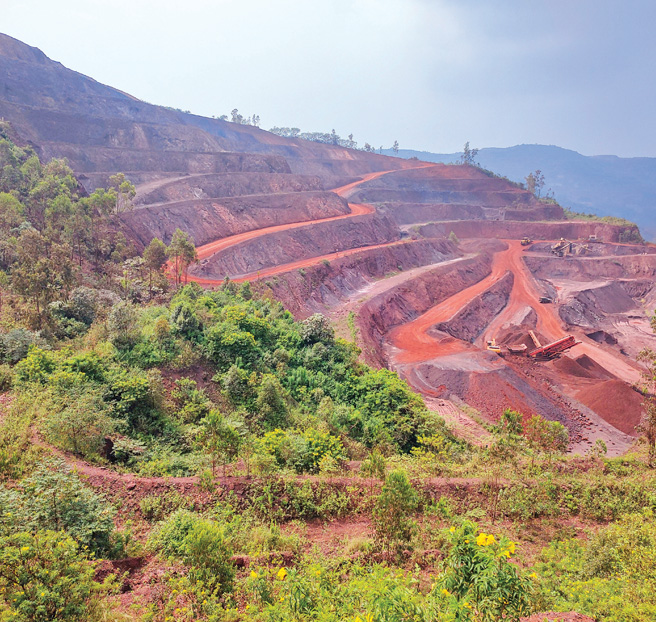
Tailings management
Our tailings management area is situated on the eastern boundary of the Vijayanagar plant. The area features a well-maintained tailings pond that receives tailings from the ore beneficiation plant. These tailings primarily comprise low-grade iron ore that is transported in slurry form via pipeline and stored in the lined tailings pond. The excess water, or supernatant, is returned to the beneficiation plant.
The geosyncline on which the pond is constructed has a hard impervious rock bottom, and the project site has been subjected to various geophysical, hydrogeological, and TCLP tests, along with an Environment Impact Assessment (EIA), conducted by reputable institutes and companies such as MECON and Richardson & Cruddas to confirm its safety and health.
Specialists collaborated on constructing bunds using pre-engineered designs and water recovery facilities to prevent seepage from the pond. The bund's base is made of High Density Polyethylene (HDPE), ensuring its stability.
The pond complex comprises three ponds, namely Pond 1, Pond 2, and Pond 3. Pond 1 is currently being emptied using a dredger, and the paste obtained is sent to the Slime Recovery Plant (SRP). The SRP retrieves >45% Fe bearing material, which is sent to the Pellet Plant for pelletisation, while the tailings with <45% Fe from SRP are transferred to Pond 2. Pond 3 receives tailings from the ore beneficiation, and the tailings are thickened for paste transportation, and dewatering is done to improve the bund's stability.
Interventions and outcomes for FY 2022-23
INTERVENTIONS
OUTCOMES
As a heavy industry, steel manufacturing involves a complex series of processes that produce significant amounts of noise, dust, fumes, smoke, and odours, all of which have the potential to affect local communities.
We understand the importance of being a responsible corporate citizen, and we are committed to ensuring that our operations do not cause any disruption to the surrounding environment. To achieve this, we have implemented a four-pronged strategy that encompasses identification, prevention, feedback, and monitoring to address the critical issues that matter to our stakeholders.
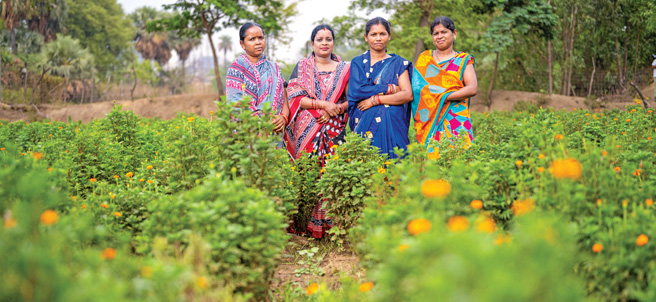
Interventions and outcomes for FY 2022-23
INTERVENTIONS
OUTCOMES
JSW Steel Salem Works is proud to join forces with the Tamil Nadu government's 'Meendum Manjappai' scheme, taking a proactive stance in the battle against single-use plastic bags. This initiative aims to raise awareness about the detrimental impact of these bags and promote the use of eco-friendly cloth bags, aligning with the government's vision of a plastic-free state.
To support this cause, Salem Works has acquired a cloth bag vending machine, providing yellow bags to the public at a nominal cost of ₹5 per bag. This automated machine incorporates a QR code system for convenient purchasing and usage. The company has generously sponsored the vending machine to the District Environment Engineer, TNPCB, Salem, demonstrating its commitment to the government's campaign.
The launch of the 'Meendum Manjappai' scheme commenced with a special event at the District Collector's Office in Salem. The District Collector enlightened the audience about the detrimental consequences of single-use plastics on the environment. As part of the event, 500 yellow cloth bags were distributed, encouraging individuals to transition from plastic bags to eco-friendly alternatives.
We take immense pride in supporting the Tamil Nadu government's drive to raise awareness about the destructive nature of single-use plastics. Through the sponsorship of the cloth bag vending machine, the company aspires to inspire more people to embrace sustainable practices and contribute to the creation of a greener future.
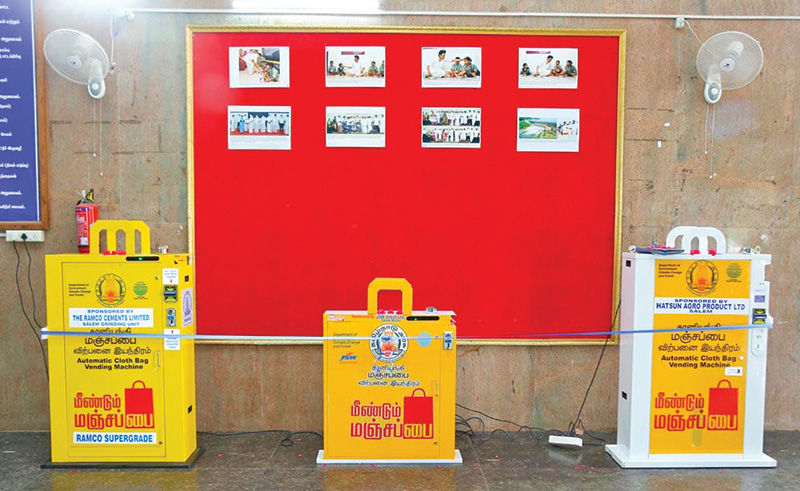
At the core of JSW Group lies a deep commitment to product sustainability. We are dedicated to producing sustainable products that prioritise consumer safety. Our approach goes beyond addressing environmental impact. We strive to protect the environment, conserve resources, and exceed legislative requirements. Our goal is to safeguard the well-being of our customers and end-users. Customer satisfaction serves as the ultimate measure of success for these endeavours. Our unwavering focus across all businesses within JSW Group is on adding value for customers, positioning ourselves as the preferred supplier in all markets, and enhancing the overall well-being of society.
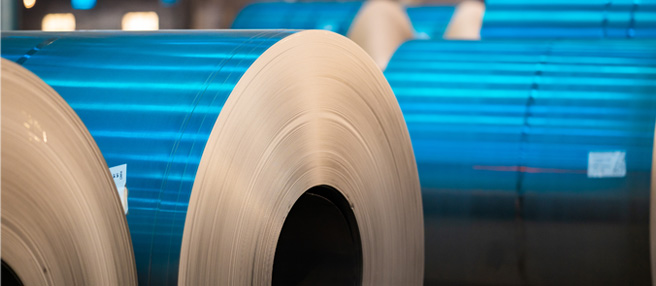
Championing sustainable excellence
We received a GreenPro certification for our JSW Neosteel TMT bars and 14 categories of Roofing Sheets. Notably, we have also attained a significant milestone as the first manufacturer to receive the prestigious GreenPro ecolabel for our 'Automotive Steel' products. Our active involvement in developing the GreenPro Automotive Steel standards exemplifies our thought leadership and unwavering commitment to fostering sustainable practices in the industry.
The GreenPro ecolabel, developed by the Confederation of Indian Industry's (CII) Green Business Centre, represents the highest standards of environmental sustainability and product performance in the Indian manufacturing sector. It signifies that our products are manufactured with meticulous consideration for their environmental impact throughout their entire lifecycle, encompassing raw material sourcing, production processes, energy consumption, and end-of-life management.
The availability of the GreenPro ecolabel for our 'Automotive Steel' products empowers automotive manufacturers to make informed choices, promoting the adoption of sustainable materials throughout their supply chains. By selecting JSW Steel's certified products, automotive manufacturers can enhance the overall sustainability of their operations and contribute to a greener future.
The GreenPro ecolabel has garnered widespread recognition as a symbol of excellence. Obtaining this esteemed certification underscores our commitment to producing steel solutions that align with the principles of environmental stewardship and sustainability. With our GreenPro certified products, we are not only setting new benchmarks but also leading the charge towards a greener and more sustainable future for the manufacturing industry.
In addition to the GreenPro certification, JSW Steel has also obtained Environmental Product Declarations (EPDs) –Type III eco-labelling for all 14 finished products from our three integrated steel plants. We are actively working towards obtaining EPDs for all finished products from our downstream plants. The use of EPDs empowers us to effectively communicate quantified environmental information to customers, providing reliable, standardised, and comprehensive insights into the product's lifecycle. Our branded products viz. Radiance, Colouron +, Silveron+, Vishwas+ and Vishwas are all GreenPro certified.
We believe that sustainable practices are a value-creation imperative that offer significant long-term benefits for all stakeholders.

The following products are GreenPro certified:


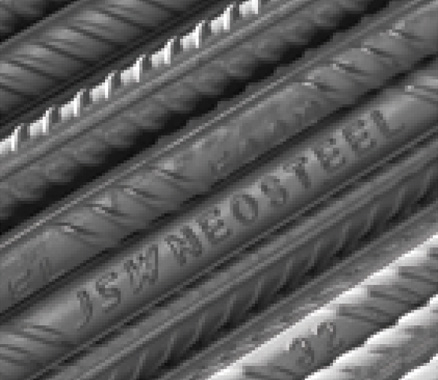
Read more about our sustainable products here